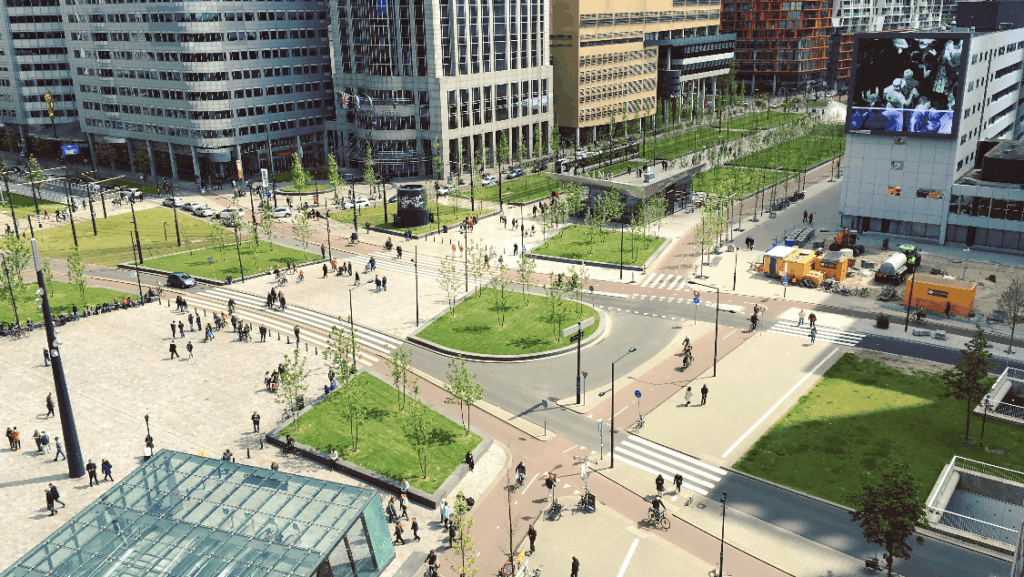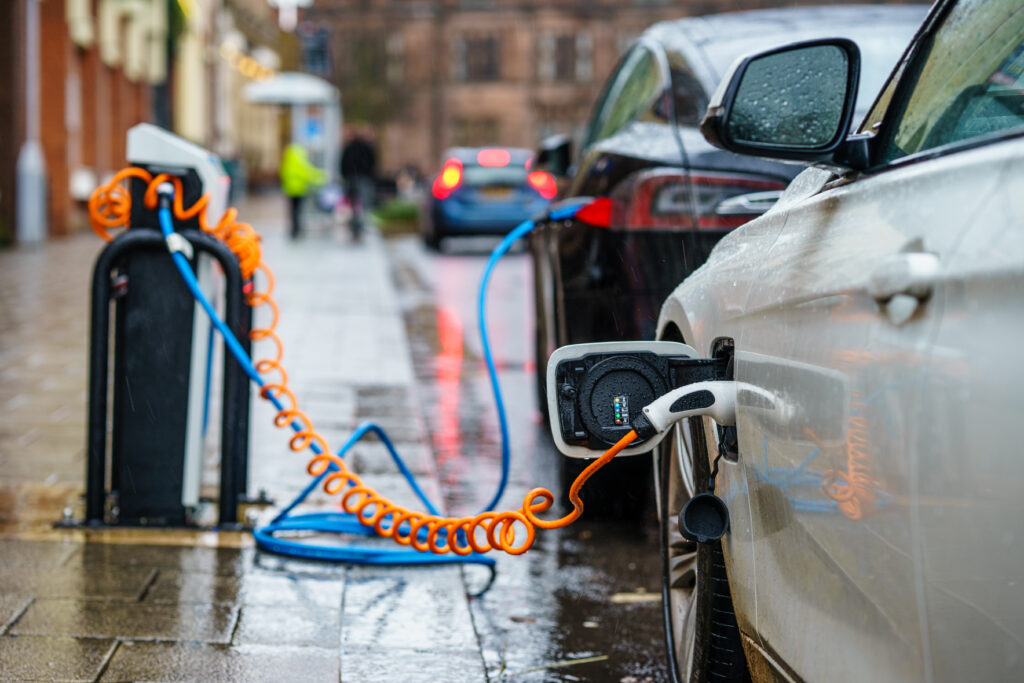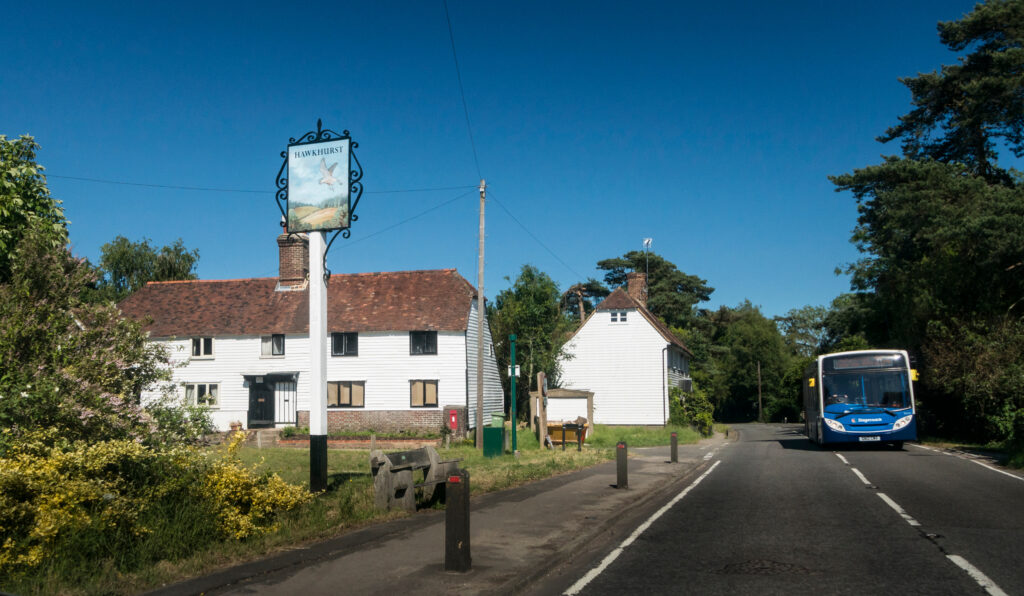Reimagining technology in the public realm
Geofrey Stevens, Urban Technology Team Lead and Gavin Summerson, City Standards Team Lead explore how we start to carefully engage with the outside again and the public realm under the ‘new normal’, this provides us with a time to consider how we might reimagine our streets, such as making better use of public spaces for active travel and the benefits this could have.

It is also a good time to consider reimagining technology, what role we want technology to play in our streets as they become increasingly digital. There are more and more devices collecting data, opening up new opportunities for the public and private sector. With the right products and services, the digital public realm could have a positive impact on cities. This includes better service delivery, supporting civic engagement and participation and providing spaces for experimentation.
Yet at the same time, there are also many potential negative consequences if not deployed in the right way.
With such constrained and cluttered public spaces, the problem of crowded streets combined with social distancing has brought an existing problem to the forefront. This raises the question of how we can provide better spaces for people, with new developments receiving criticism for their lack of public space such as in Woolwich, which have been recently criticised for narrow pavements.
The public are also increasingly aware of how their personal data is used and are suspicious, particularly of technology in the public domain. This was shown recently with some more extreme examples with the 5G conspiracy theories, leading to a number of telephone masts being set alight, which has been widely condemned.
How can we provide greater trust and improve more positive deployments?
We were pleased to take part in the recent LOTI (London Office of Technology) and Sharing Cities London IoT week, which has been exploring ‘How can boroughs use IoT-enabled smart street infrastructure for the benefit of all Londoners?’, which you can find more about here.
Learning by doing
When we wanted to explore the possibilities and barriers to digital infrastructure in the streets, we decided to build and deploy a prototype ‘TechTotem’ to help us learn first hand and start the conversation with industry, government and citizens, being strong believers in learning by doing. Since then we have been engaging with industry, government, planners and designers, running events such as our roundtable and our third Thursday to share knowledge and ideas for how the future of digital street furniture might look.
Introducing ‘The Principles’
One of the outcomes of our learning was the potential for guidelines to allow cities and industry to deploy these technologies in a positive way. Based on the results of the discussion as well as further research, we have developed guidelines into a set of draft Principles for Good Deployment for Digital Street Furniture.
What are the Principles for?
The principles are intended to form a basis for dialogue between councils, providers, designers and anyone involved in a deployment. They do not make up a legal document, but a guide for shaping deployments, and in the future could form the basis for a formal standard or “kitemark” for good deployments.

What is digital street furniture?
Digital street furniture is any furniture that is located in a public space which may have digital screens, sensors or any other digital actuating or sensing components. It interacts either actively or passively (or both) with people or its direct environment.
Street furniture could refer to specific physical objects located in public space, that are a part of what we could consider the overall streetscape. Our focus is on the entire digital streetscape not limiting ourselves to only single objects in the public realm.Principles of good deployment
Principle 1: Transparency
Devices that collect data in the public realm should clearly communicate:
- what data are being collected
- why data are being collected (the purpose)
- how the data are being processed
- who owns and controls the data
- what (if any) personal data are being collected, and how they are anonymised
Principle 2: Trust
Publicly collected data should be made available, where appropriate, by an independently accountable data trust. These trusts should evaluate individual requests for data, and provide justifications for when data cannot be released.
If data collected in the public realm are mostly created by citizens, they should be able to see how the collection of them can contribute to the common good, and therefore benefit society.
Where data or derived information could be used for public benefit it should be made available to the relevant authorities. In some cases, data may be made available to public authorities only: for example where privacy or safety issues make the data unsuitable to be publicly available. This assessment should be carried out by a data trust.
Explainer: What is a Data Trust?
Data trusts as defined by the Open Data Institute ‘provide independent, fiduciary stewardship of data’. They provide a legal framework allowing data to be pooled together and looked after by a third party. They provide a set of rules whereby data access can be limited to only those that also conform to rules of access and safekeeping. This gives people and organisations confidence when enabling access to data.
“Data Trusts ensure governance structures are in place and address both the terms of data sharing and the monitoring of access…by providing third-party oversight from and creating a degree of separation between developer, data collector and profiting organisation.”
In The State of City Data, we explored the role Data Trusts could have in enabling cities to encourage public confidence and consensual participation with technology in the public. Data Trusts ensure governance structures are in place and address both the terms of data sharing and the monitoring of access. This can be done in an acceptable (and ethical) manner by providing third-party oversight from and creating a degree of separation between developer, data collector and profiting organisation.
Principle 3: Public Good
Digital street furniture should only be placed in the public realm when it explicitly demonstrates public benefit.
There must be a fair value exchange between the place, its users and inhabitants and the street furniture. This can be seen either directly through services provided or indirectly through revenue share.
Principle 4: Longevity
The full life cycle of any object placed in the public realm should be considered and the objects should be subject to review or reassessment on an agreed regular basis.

Principle 5: Inclusivity
The design of street furniture should reflect the diversity of the people who use it, not excluding any groups or individuals and not imposing any barriers to its use.
The information around data collection that Principle 1 covers should equally be accessible to all potential users.
If Digital Street Furniture forms a part of the public streetscape, the design should be inclusive and consider the local and wider community. The design of Digital Street Furniture objects should allow everyone to access the services in a way which does not hinder some users.
Additionally, related to Principle 3, the design should not unintendedly exclude certain users from accessing its services or benefits.















